Affiliate links on Android Authority may earn us a commission. Learn more.
How sci-fi movies and TV shows have imagined mobile phones, smartphones and tablets
August 25, 2018
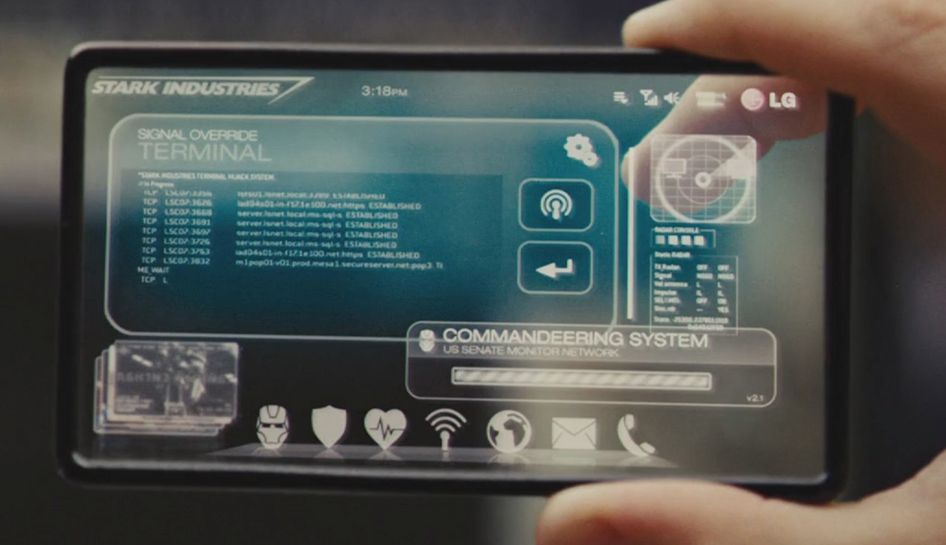
Science fiction often takes a speculative look at the near and far future. Sci-fi comic books, novels, artwork, and especially movies and TV shows, often play with new and cool gadgets we might use in the coming years. Some have proved prophetic, predicting space travel, lasers, and the use of computers and robots. Other predictions have missed the mark — we’ll have to keep waiting for our flying cars and jetpacks.
Read Next: What will smartphones of the future look like? Here are 6 (crazy) predictions
One thing most sci-fi movies and TV shows didn’t accurately predict was the rise of mobile cellular phones and, later, smartphones and tablets. Even some recent movies have gotten details wrong about how we would use portable devices to communicate, work, and play even in the near “future” of these fictional worlds.
Let’s take a look back at how certain classic film and television series have attempted to show the future of mobile communicating and computing. As you will see, none were 100 percent correct, though a couple actually came pretty close.
Dick Tracy: Two-Way Wrist Radio/TV
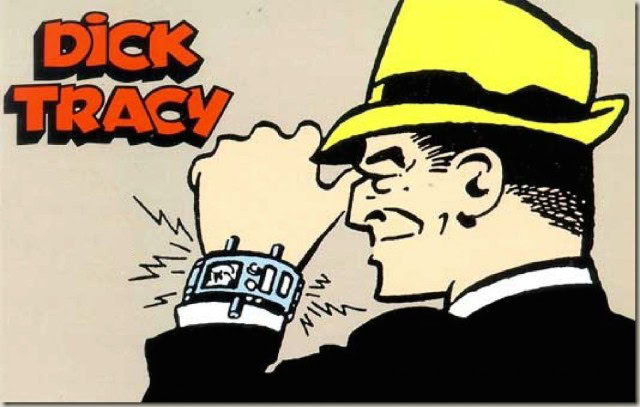
It’s hard to believe, but over 70 years ago, a comic strip artist came up with the concept for a mobile phone which has, to this day, served as both the hope and inspiration for portable communication in general. Chester Gould, who created the over-the-top police detective Dick Tracy in 1931, first had his title character use his two-way wrist radio in a January 1946 strip (Tracy upgraded it to a two-way TV in 1964).
While other characters in superhero and sci-fi comics were still using old-fashioned radios and walkie-talkies to communicate, the Dick Tracy wrist radio-TV was way ahead of its time. It served as the precursor to not just the mobile phone but also to the modern day smartwatch.
Star Trek: The Original Series and Movies – Communicator and Tricorder
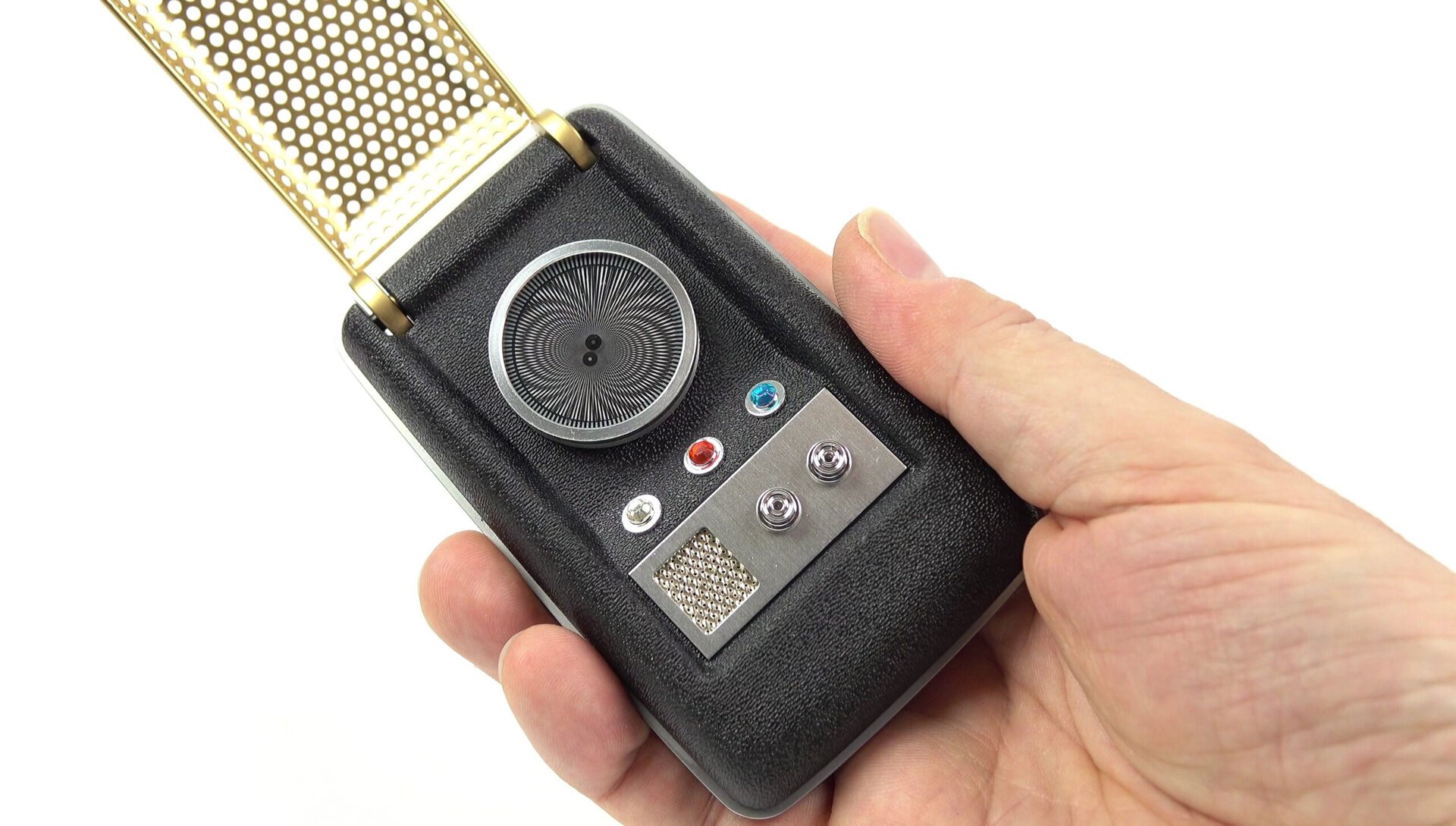
The original Star Trek series in the 1960s had Captain Kirk, Mr. Spock and the other members of the USS Enterprise equipped with a portable communicator that worked when you flipped open the cover with a flick of the wrist. It definitely served as inspiration for the first “flip phone” which Motorola launched in 1996 (indeed, the first model was called “StarTAC”). Today, you can actually buy a Star Trek: TOS replica that actually works as a Bluetooth speaker on Amazon.
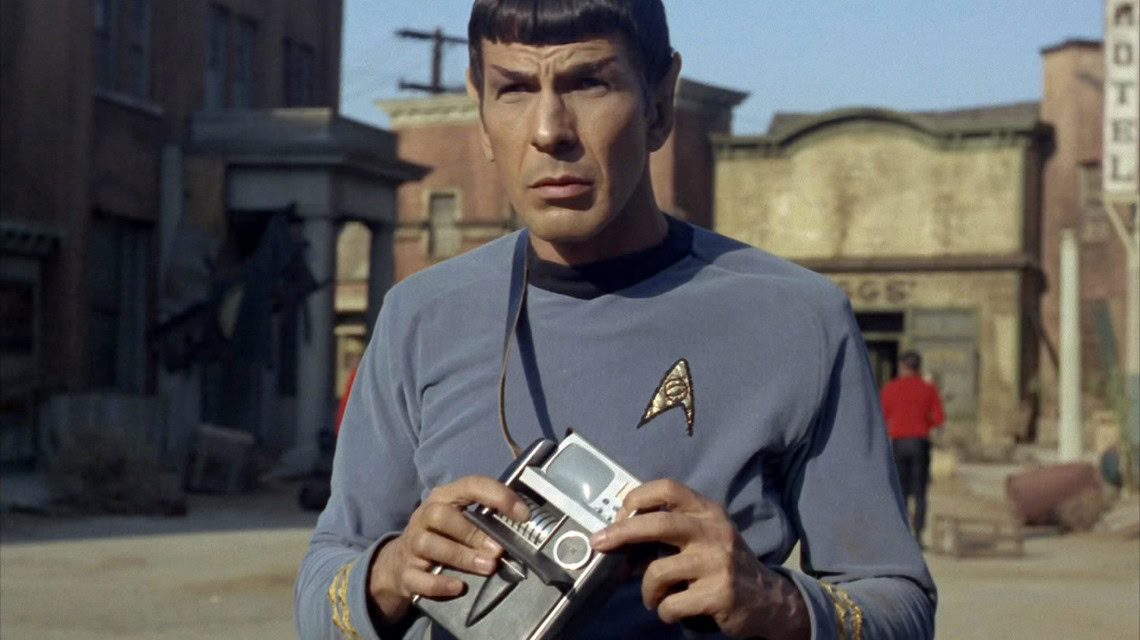
Starfleet members could also bring down a “tricorder” which was basically a portable computer with sensors for collecting and gathering data. It’s too bad the designers of both the communicator and the tricorder for the series didn’t think to combine the functions of both devices into one product. They would have been well ahead of the curve in predicting the current smartphone era.
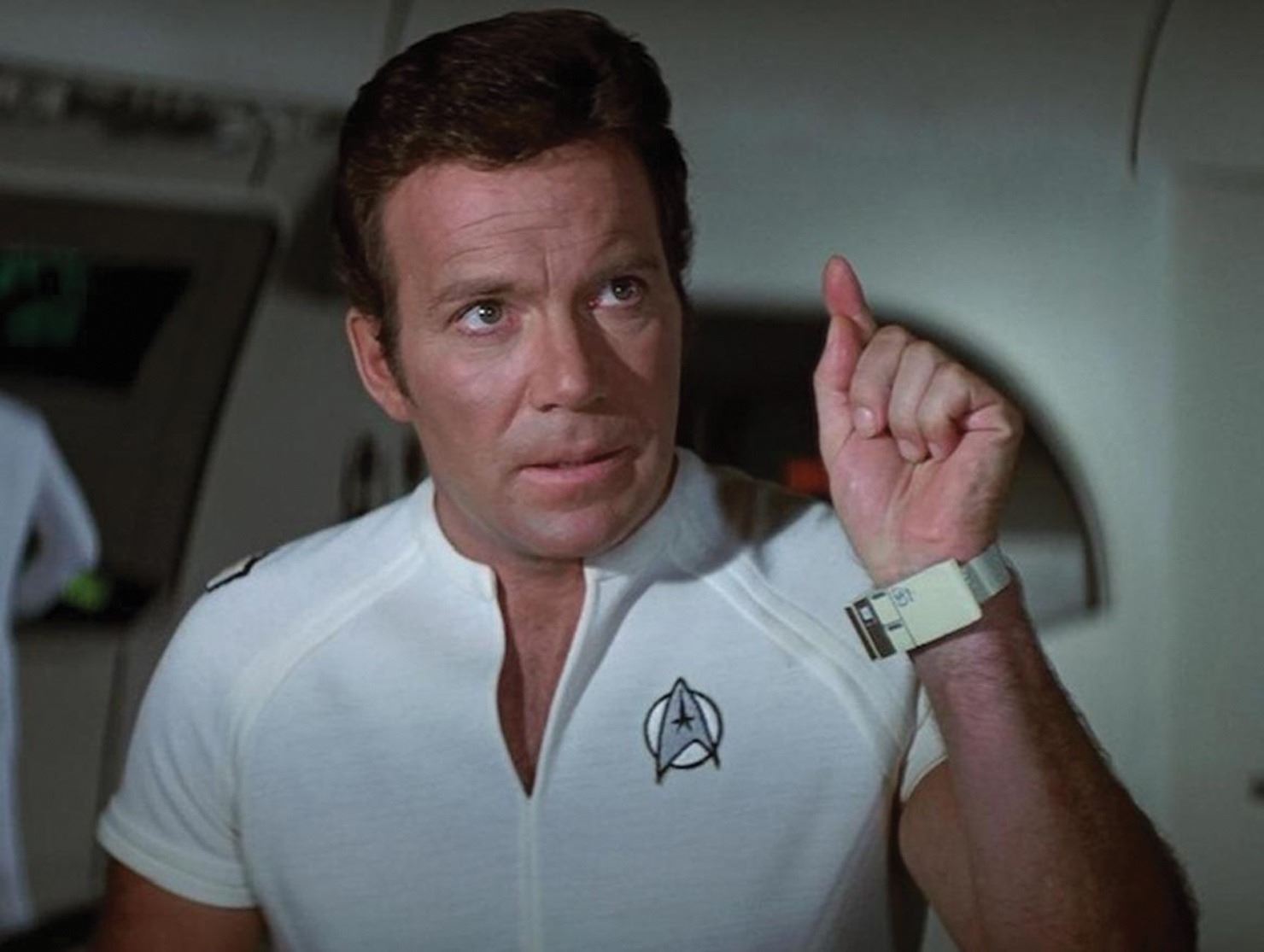
We also want to quickly mention that in Star Trek: The Motion Picture, which was released in 1979, it was decided by the filmmakers to ditch the TV show’s handheld communicator with a wrist-worn device. This is actually closer to what the future might hold for communicating, and as you can see, its design makes it look like it can do things other than just audio. However, in future film sequels with the cast of the original series, the “flip phone” communicator, or at least a new version of it, made its return.
2001: A Space Odyssey – Newspad
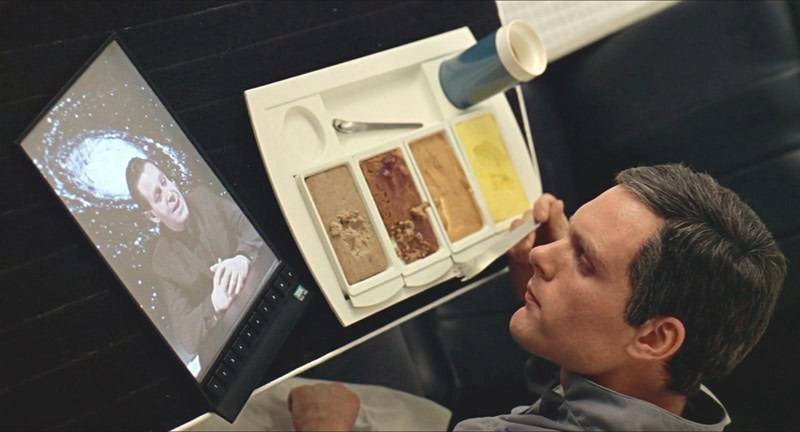
It’s still one of the greatest sci-fi films of all time, even if its timeline for predicting moon colonies and manned trips to Jupiter was just a bit off. Onboard the spaceship Discovery, we see astronauts Dave Bowman and Frank Poole with a flat and slim “newspad” device for watching videos that looks an awful lot like what we know today as a tablet. Indeed, Samsung tried to use this specific example several years ago as part of its legal defense against Apple, who claimed Samsung infringed on iPad design patents for its Galaxy tablets. Samsung tried to make the case that the design had already been put together in 2001, via the newspad.
Unfortunately, we didn’t see any examples of this pad doing anything more than show videos, but we would imagine it served as a portable computing device and a communications product as well.
Space 1999 – Commlock
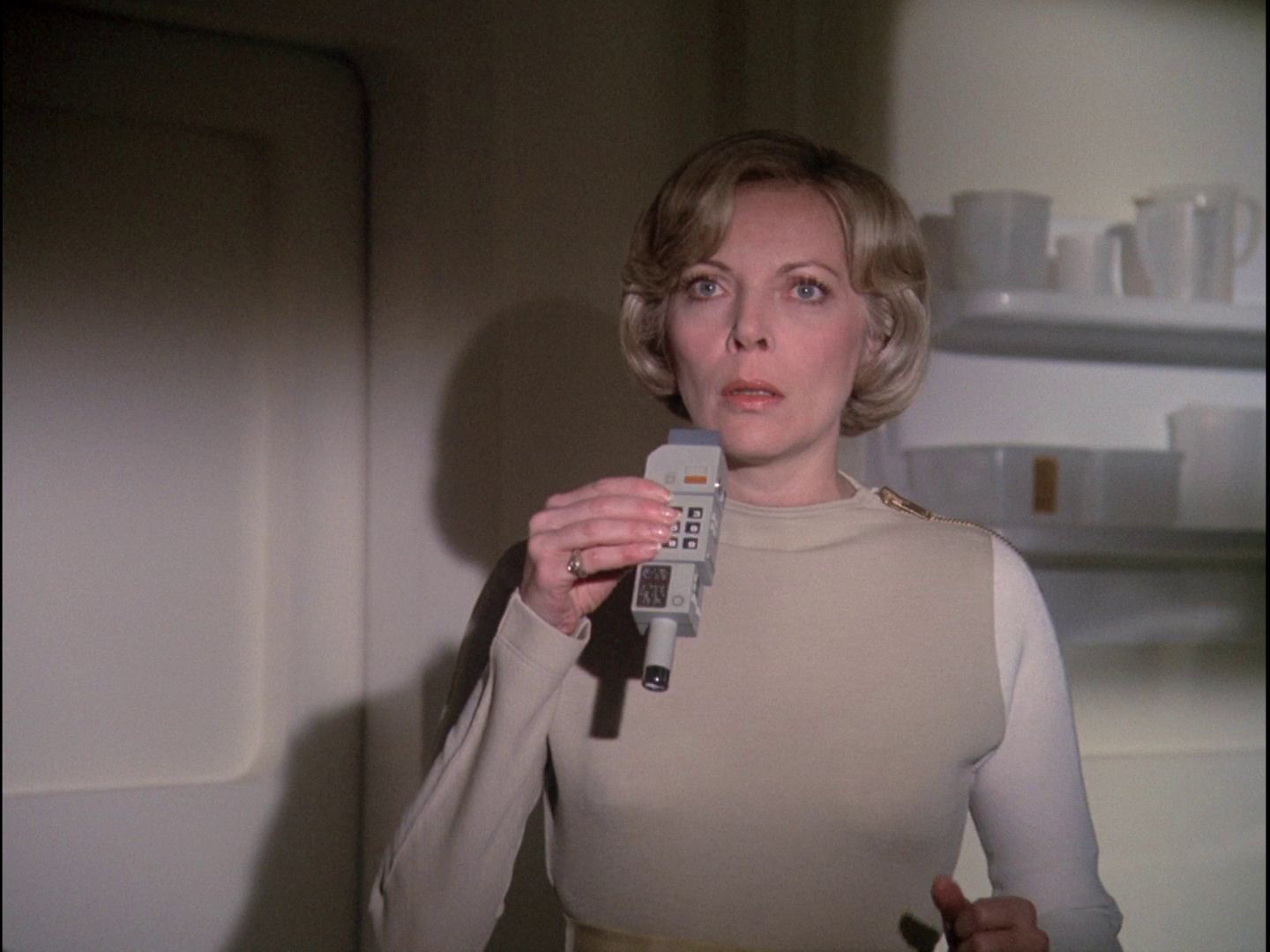
This short-lived syndicated TV show from the mid-1970s admittedly had a really dumb premise. In its version of 1999, (this show also missed its timeline) the Earth’s moon has over 300 people living and working on a base. The moon unfortunately also serves as a location to dump the Earth’s nuclear waste. That waste explodes thanks to electromagnetic radiation and sends the moon out of Earth’s orbit and into the depths of outer space.
Yes, the show’s premise was ridiculous, but at least it looked cool, with some excellent visual and model effects. All of the residents of Moonbase Alpha even had their own mobile communicator, called a commlock. It not only offered you a video chat with anyone on base, but it could be used to remotely open doors and computer panels, something now showing up in our own homes. Sometimes the commlock was used in the series to “talk” to Moonbase Alpha’s main computer. It’s not quite a “smartphone” but considering this show was produced in the 1970s, it’s not a bad bit of prediction.
Star Trek: The Next Generation/Deep Space Nine/Voyager – Communicator Badge and PADDs
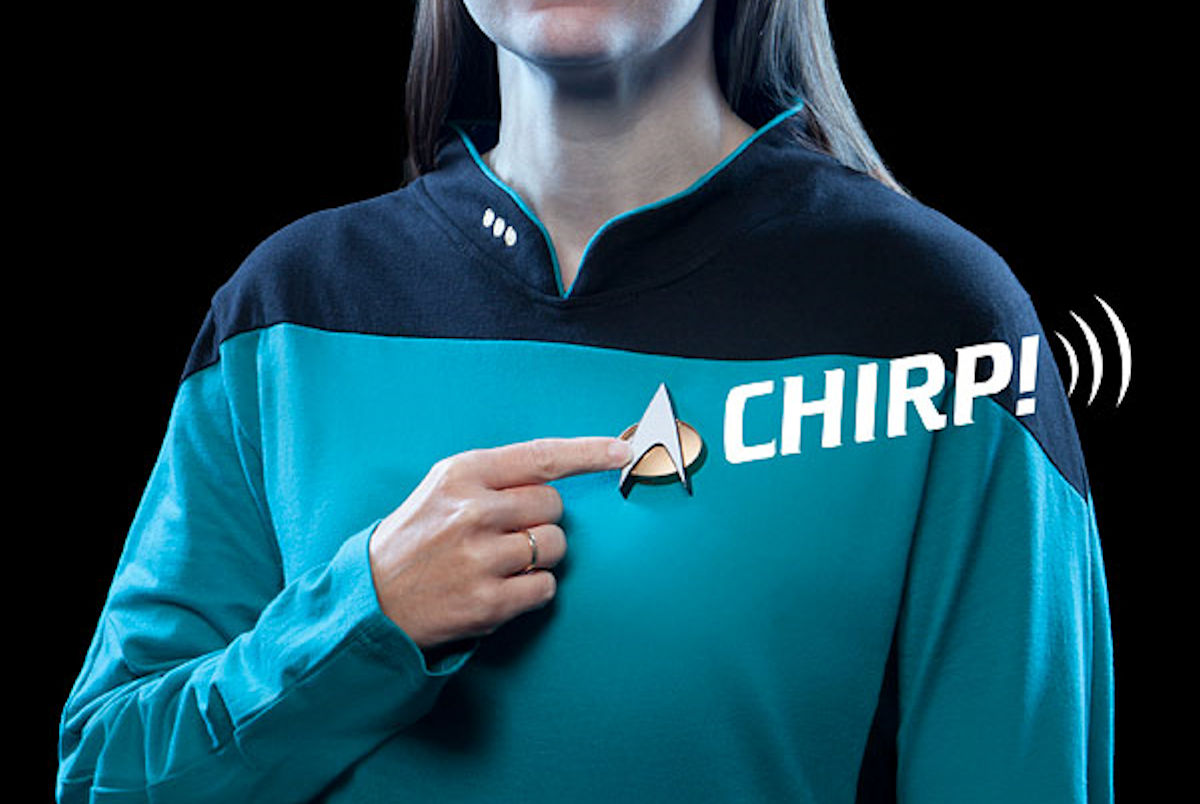
The three Star Trek TV shows (and four movies) that took place over 80 years after the Original Series era all jettisoned the flip phone communicator. In its place is the communicator badge that’s placed on the left side of the chest. All you have to do is touch it to chat with other people or the ship’s computer. It can also be used as a tracking device to find you. There would have to be some serious voice assistance and AI for the badge to find which person you want to talk to with just a touch and a command. Then there has to be some way for the sound from the communicator to directly hit your ear so you don’t disturb anyone else near you. We’d also love to know what battery tech they’ve got powering this tiny thing. OK, we digress.
As with the original series flip communicator, you can actually buy a replica of the Next Gen badge communicator that also serves as a Bluetooth device. You can connect it to your smartphone and answer calls just by tapping on it.
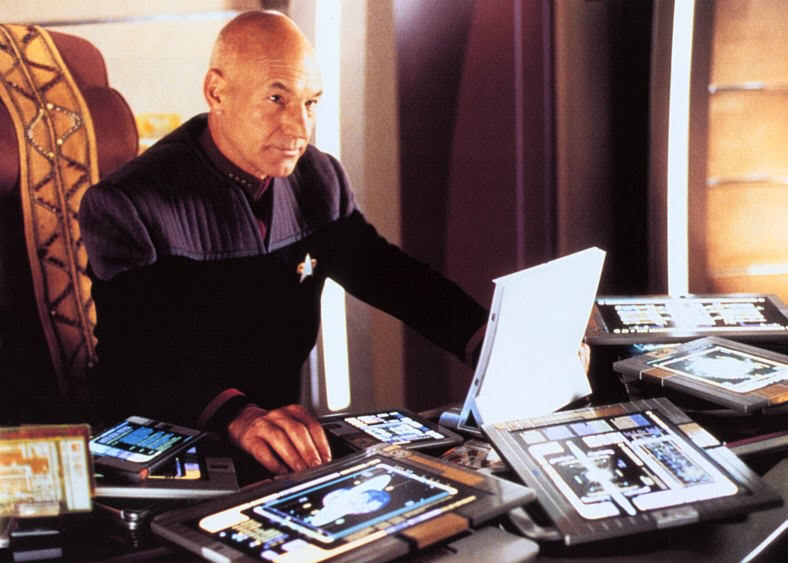
Those same Star Trek shows and movies also showed us the personal access display device (PADD), a portable computing device with a touch-based interface. It was one of the biggest inspirations for the modern tablet, although their designs are definitely bulky compared to today’s touchscreen devices. Many times we would see characters with many PADDs on their desk or console, but this really doesn’t make sense in the real world, where you would likely have just one for everything.
Tomorrow Never Dies – Smartphone/Car driving remote
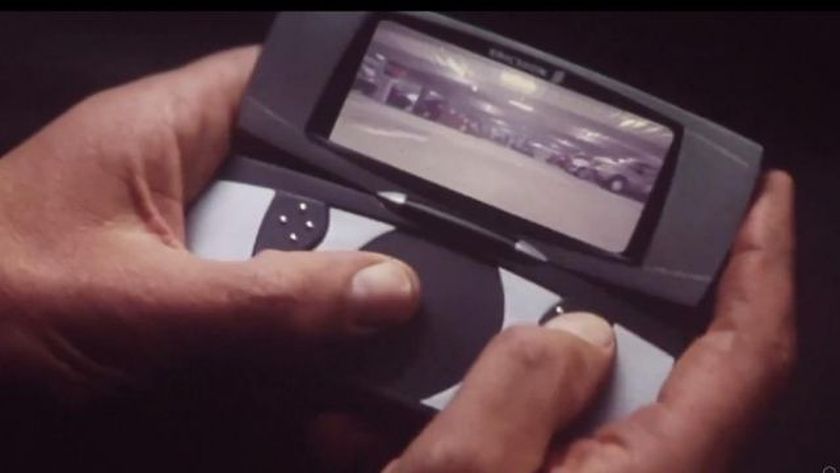
James Bond movies are famous for the gadgets Agent 007 gets from Q division. In Tomorrow Never Dies, the second Bond movie with Pierce Brosnan, Bond had a mobile phone (the Ericsson JB988) with lots of hidden uses. It could fire electrical bolts to open doors and stun enemies, and it had a fingerprint scanner for lifting the image of a fingerprint to open a door.
Without a doubt, however, the most famous use of this phone by Bond was driving his BMW from the back seat, using a touchpad on the phone to steer the car, and a small monitor to see what was in front of the vehicle. He could also activate all of the car’s gadgets with the phone, including reinflating tires, a conveniently placed cutting device embedded in the BMW’s hood logo, and, of course, missiles because this is a James Bond car.
Iron Man 2 – Transparent phone

In the first official movie of the Marvel Cinematic Universe, Tony Stark uses an LG VX9400 mobile phone with a cool rotating screen to chat on video with his friend, and later foe, Obadiah Stane. However, for the movie’s sequel, Iron Man 2, in 2010, Tony got something even cooler; a phone with a transparent screen.
Tony used this phone when being grilled by a U.S. Senate committee in the movie. It had a user interface that looked cool and performed without a hitch. LG had its logo put into the phone (you can see it in the upper right corner) but this is obviously not something the company actually sells. You can also see icons that seem to allow access to Tony’s audio phone, email, internet, Wi-Fi networks, security, his health and, yes, his Iron Man suit.
The Hitchhiker’s Guide to the Galaxy – Foldable tablet computer
When the late Douglas Adams came up with the radio play The Hitchhikers Guide To The Galaxy in 1978, the personal computer era had just started. The fictional Hitchhikers Guide To The Galaxy was depicted in both the radio play and the 1979 novel as a “small, thin, flexible lap computer.” You could type in any subject you wanted to know more about, and the Guide would give you the answer in an audio voice.
In the 2005 film version, the Guide looks like a foldable tablet, which you open up like a regular book and see a screen with its animated UI. It’s controlled by the owner via voice commands. It certainly looks a bit like some of the foldable smartphone designs we’ve seen pop up in patent applications from Samsung and others. Now we just need Bixby to be able to answer any question we might have.
Minority Report: E-Newspapers
In 2002, mobile phones had become commonplace, but the smartphone was still a few years away. For Steven Spielberg’s movie Minority Report starring Tom Cruise, the director asked a number of experts to predict what gadgets might be like in that movie’s version of the year 2054. One idea shown in the movie was an e-newspaper. You would buy and read an e-newspaper like a normal paper, but it would be made of a special material that constantly updated with the latest news.
Today, the e-newspaper era has arrived, but in the form of a smartphone, Kindle or tablet combined with websites and apps. It’s highly unlikely that the e-newspaper shown in Minority Report will actually come to pass, but at least the movie got it right about people getting constantly updated news on their portable devices.
Earth: Final Conflict – Global
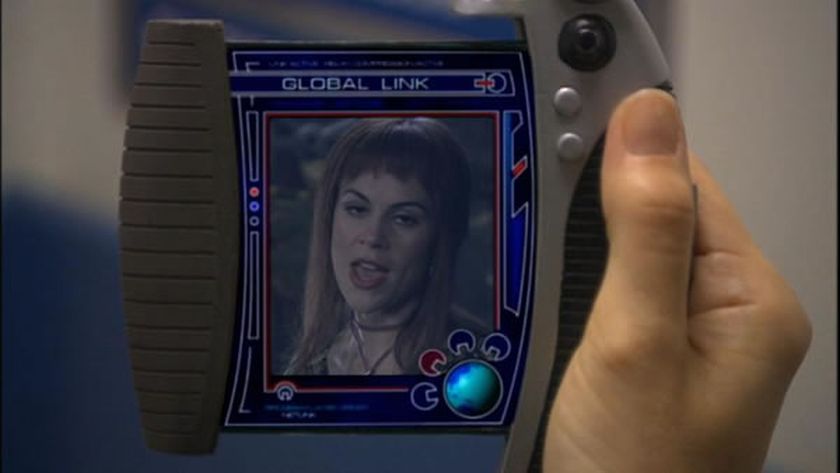
You may be wondering, “What the heck is Earth: Final Conflict?” Most of you may have not even heard of this sci-fi TV series from the late 1990s to the early 2000s. Based on concepts created by Star Trek’s Gene Roddenberry, the series depicted one of the coolest smartphone designs in fiction. The Global phone’s display pulled out from the side of the main device, (an early example of a flexible display) and offered basically all of the features of the modern smartphone.
With flexible displays in development, we have to wonder if someone will use the Global design to make something similar soon.
The Expanse – Hand Terminal
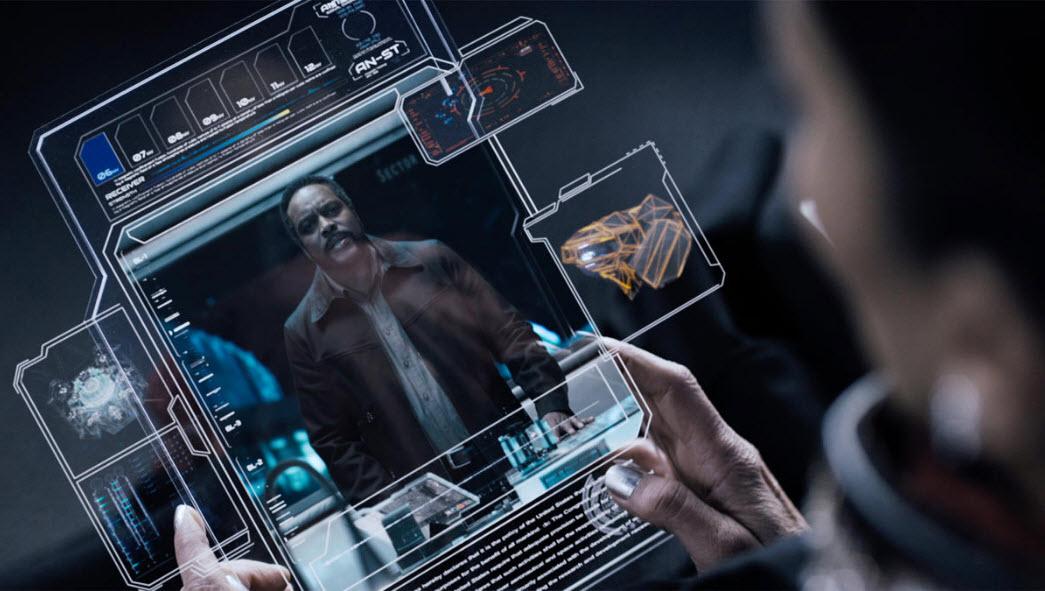
Here’s a much more recent example of what a future portable computing and communication device might look like. The current cult hit sci-fi show The Expanse takes place many decades in the future. The people in that future communicate and get info via translucent hand terminals. The terminals themselves connect wirelessly to local and nearby computer networks. They certainly look cool and even have some augmented reality features, which is only now starting to pop up in our own smartphones.
Conclusion
Plenty of sci-fi movies and TV shows broadly predicted a lot of new inventions, but most of them didn’t predict just how mobile phones, smartphones, and tablets would drastically change our lives, for better or for worse. Now that the mobile computing revolution has arrived, you can bet upcoming sci-fi films and TV series will try to do a better job in that area.
Do you know of any other other sci-fi movies or TV shows that took a stab at predicting the rise of smartphones and tablets? Let us know your thoughts in the comments.